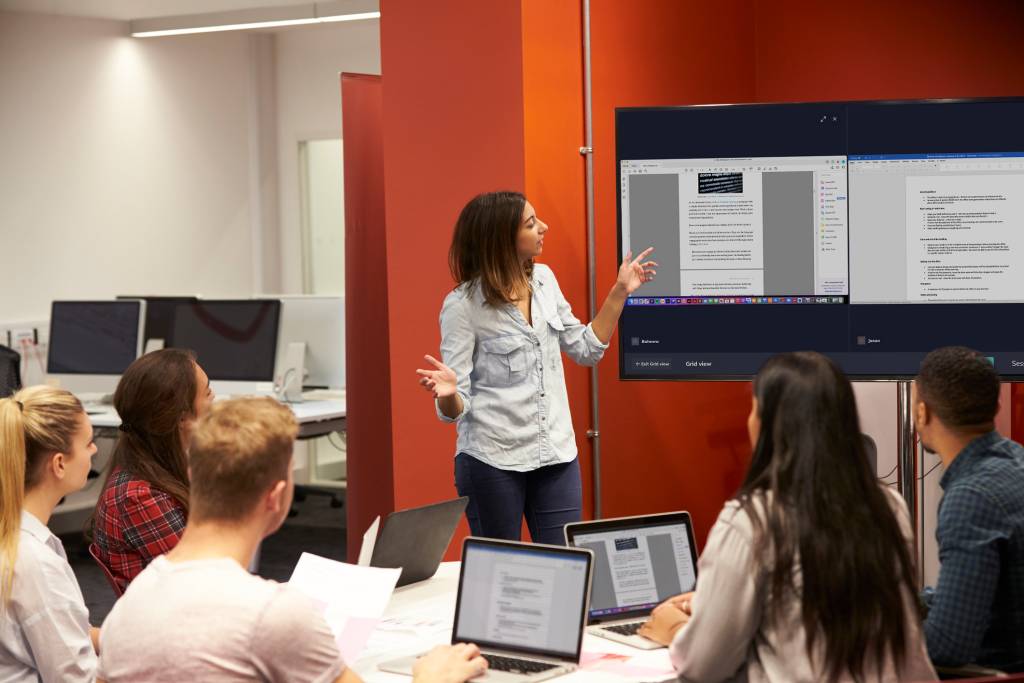
What we’ve learned from looking at 6 months of screen sharing data
 Eddie Morgan
•
Jun 24, 2022
Eddie Morgan
•
Jun 24, 2022
Screen sharing, casting, mirroring, Airplaying, streaming…we might call them different things and at a technology level, they’re all a little different – but the job to be done by these tools is fundamentally the same: sharing your content to another TV, screen, or monitor from a computer, smartphone, or tablet.
DisplayNote began life 10 years ago with a product that helped teachers stream what was on their interactive projector out to these new things called iPads. In those 10 years, those iPads have become faster and lighter, and screen sharing become an integral part of daily life in the classroom.
So, we thought it was about time we looked a little closer at screen sharing in education to see what’s really happening. And to do that, we had to look a little closer at our product data, examining the last 2 million screen shares to see just what’s going on.
📊 Our Key Findings
- Screen sharing is a core component of daily lessons. Almost 70% of users use the DisplayNote app daily.
- Students are using a variety of different devices for learning – when it comes to screen sharing Mac, Windows, Android, iOS, web, and native casting all have their place.
- Web-based screen sharing is king: 53% of users shared their screen via their Chromium browser.
- Touchscreens are a large part of the equation
- Teachers need a flexible but controlled environment – Teachers like the ability to walk around the room and share their content from anywhere but also be in control over who can share.
Now, let’s look at each of these findings in more detail….
💻 Screen sharing is a core component of daily lessons
Looking at the data we see that a majority of users check-in with the app on a daily basis during core school hours (except at weekends when we see product usage dip). Drilling down further, we can see that those screen sharing sessions come in all shapes and sizes: 10-minute sessions, 20-minute sessions, 40-minute, 60-minute and 60+


👑 Web-based screen sharing is king
With four times as many Chromebooks being sold in 2021 compared to the previous year and a 65.21% market share for the Chrome browser, it’s no surprise to see that web-based screen sharing is ruling supreme. In fact, 53% of all our screen shares came from browser.
Paired with the popularity of Chrome, browser-based sharing also means no apps to manage, nothing to update, and a small learning curve when it comes to screen sharing.
👉 Touch screens are a big part of the equation
Looking at the data, we see lots of cross-over between screen sharing and interactive touchscreens. In fact, 21% of users use the touch screen alongside screen sharing. This could be for controlling a laptop from the touch screen (to untether the teacher from their desk) or to invite a student to share their screen at the front of the room.

📱Students are using a variety of different devices for learning
When it comes to screen sharing, every device type and platform has its place. Although we see Windows and Chrome come out on top, iOS, and Mac starting to catch up.
- Windows 45.9%
- Chromium OS 20.6%
- iOS 14.8%
- Mac OS 13.6%
- Android 5%
- Others 0.1
💡 Our students use Chromebooks, which means they can easily screen share from their desks and display their work on the board at the front of the room. If a student is working on a Google Doc and the teacher wants to use this as an example for the class, the student can share this on the board, and the teacher can use the built-in pen tool to highlight sections of the document.
Britney Horton, Digital Coach, Denver Public Schools
Teachers need a flexible but structured environment
Interestingly, around 20% of users turn off instant sharing in favor of a managed session where the teacher decides who can and cannot share.

💡 Nice to know
- The most popular screen resolution was 1280 x 720, which was used for 31% of all screen shares
- 1,795 different resolution sizes connected to a session from Jan to June 22
- One person connected to a session using a PlayStation and 3 people connected with an Xbox
🌎 Geographies
The Top 10 screen sharing states in K12 for North America in 2022
- Texas
- California
- Oklahoma
- Florida
- Virginia
- Washington
- Tennessee
- North Carolina
- Louisiana
- Ohio
🤔 What does this all tell us?
- More and more schools are turning to and using screen sharing software that uses the browser.
- Screen sharing is little and often rather than day-long sessions.
- Screen sharing is a core component of daily lessons.
💡 As our teachers move from classroom to classroom throughout the day, they know they can enter any room and easily share their lesson material to the interactive display without having to think about networks.
Esteban Nunez, IT Admin St Bonaventure Schools
This report was based on 2,390,114 screen shares from 1st Jan to June 26th, 2022.
DisplayNote Media Contact: Ed Morgan [email protected]

Find out more about DisplayNote screen sharing solutions for education
We're trusted by thousands of educators across the US and beyond.
Want to stay in the loop?
Keep up-to-date with everything DisplayNote – including new releases, job openings, and customer giveaways.
Don’t worry, we’ll not spam you and we’ll never share your email with anyone







